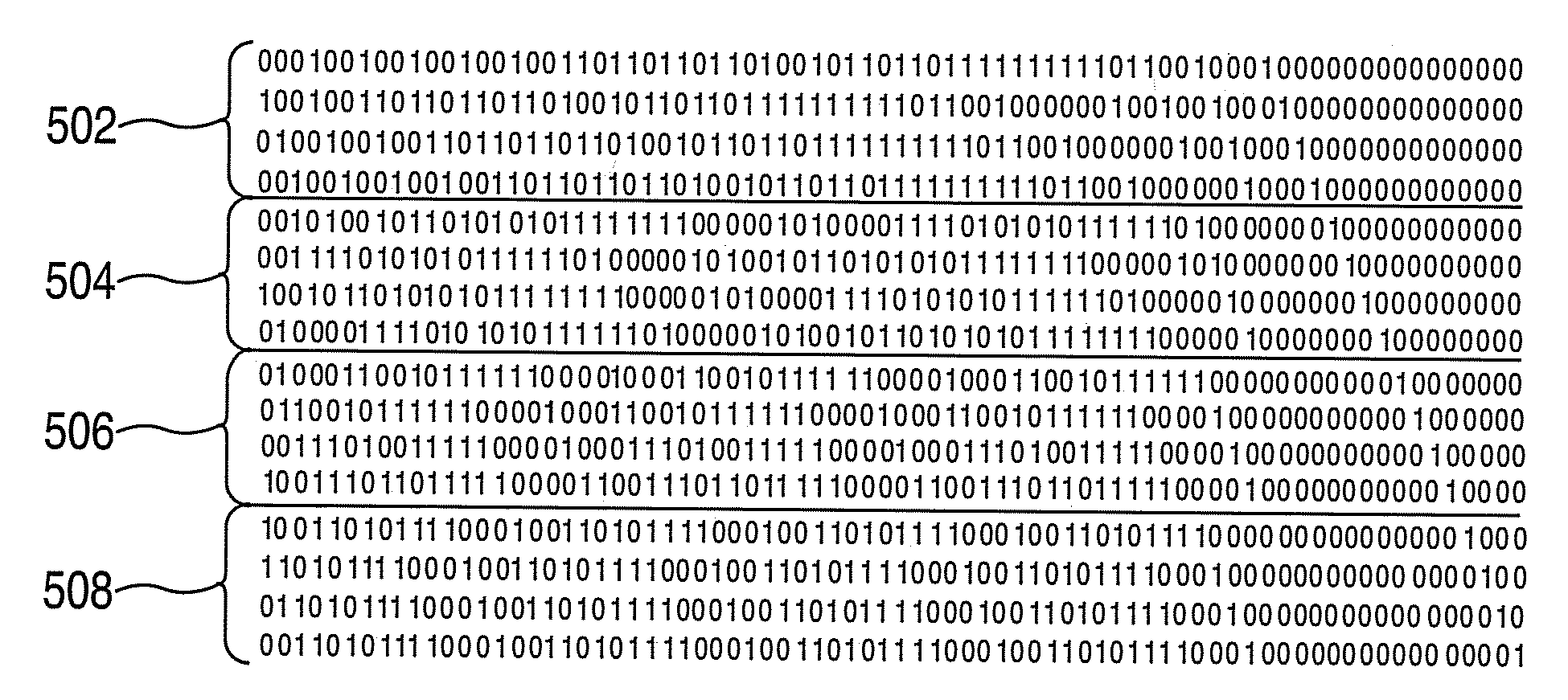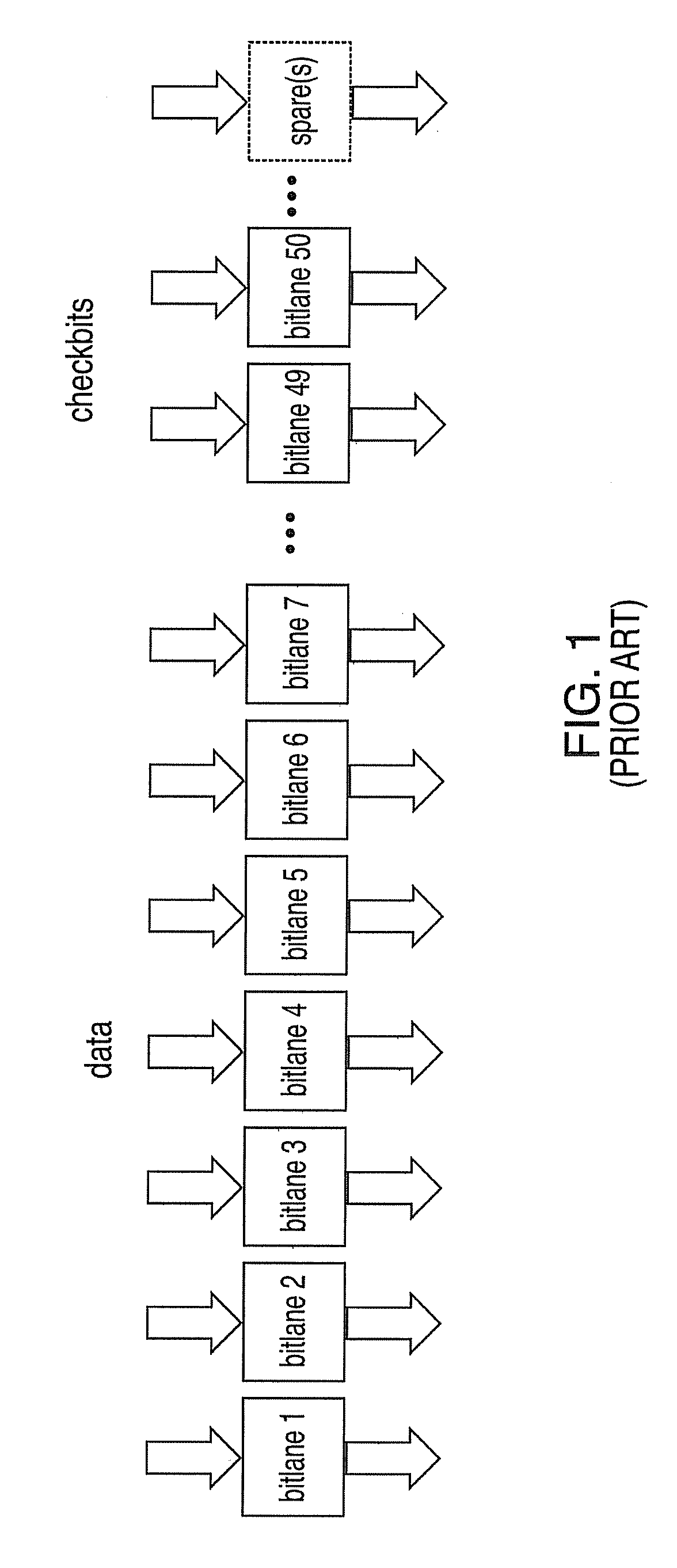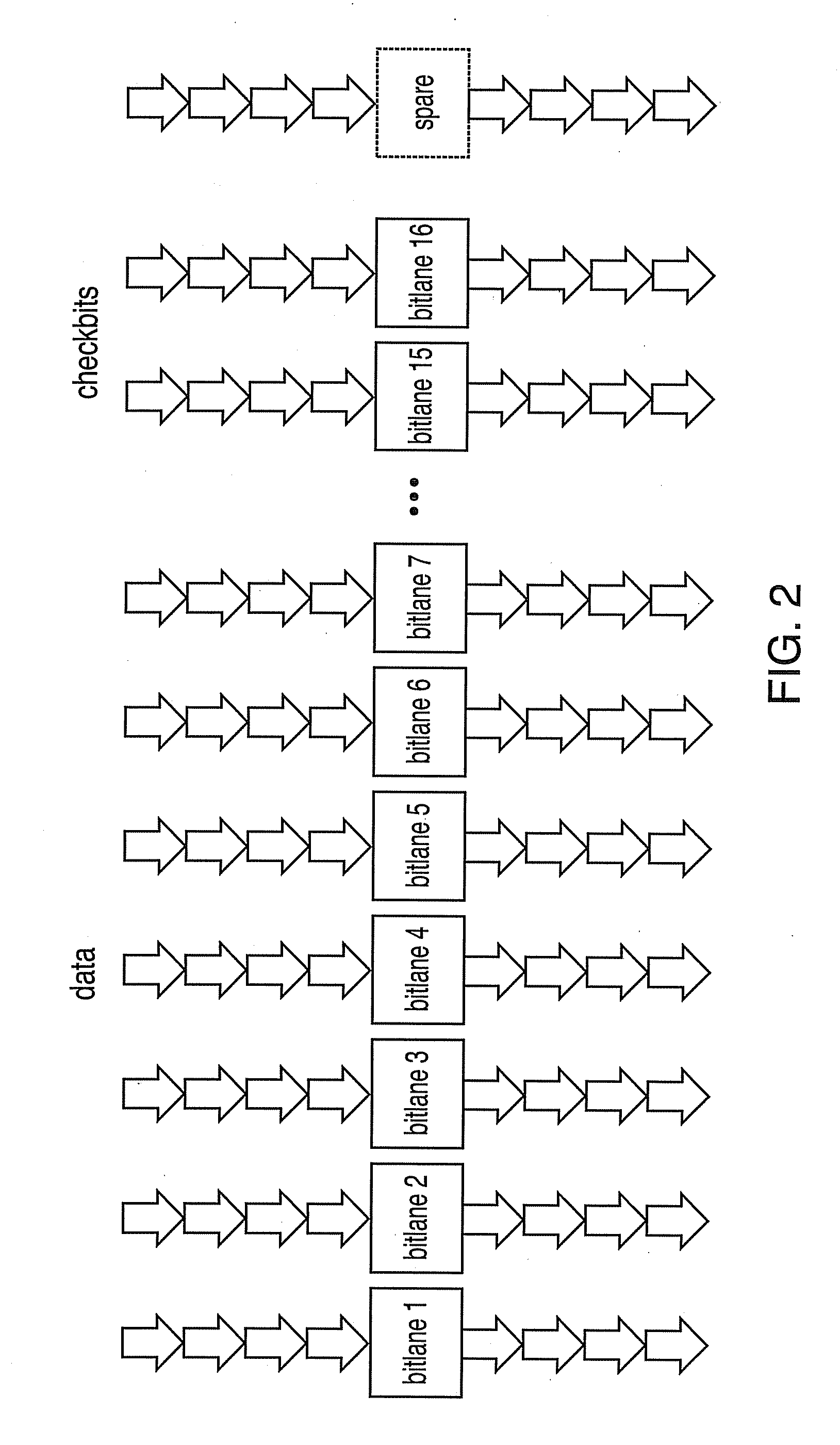Systems, methods and computer program products for utilizing a spare lane for additional checkbits
a spare lane and checkbit technology, applied in the field of data transfer, can solve the problems of soft errors, less useful for hard errors, and hard errors when the physical medium experiences a fault, and achieve the effect of robust error detection and robust error correction function
- Summary
- Abstract
- Description
- Claims
- Application Information
AI Technical Summary
Benefits of technology
Problems solved by technology
Method used
Image
Examples
Embodiment Construction
[0020]An exemplary bus architecture includes twelve data wires, four error correcting code (ECC) wires and one spare wire that can be used for any wire fail. Each of these wires may be referred to logically as a bitlane. In a typically memory system, the spare wire, or spare bitlane, may be used to replace a failing wire between the memory controller and memory module, or between any two memory modules. In addition, the spare wire, or spare bitlane, may be utilized to replace a wire due to any number of hard failure modes, including, but not limited to: a wire failure, a connector failure, a solder interconnect failure, a driver failure and / or a receiver failure. Soft, or transient errors (e.g., due to factors such as noise and / or jitter) are generally more random and are corrected by the ECC when they occur.
[0021]In exemplary embodiments, an extended Reed-Solomon (R-S) code is used to define a distance 4 code (d=4). As is commonly known in the art, the term “Hamming distance” refer...
PUM
 Login to View More
Login to View More Abstract
Description
Claims
Application Information
 Login to View More
Login to View More - R&D
- Intellectual Property
- Life Sciences
- Materials
- Tech Scout
- Unparalleled Data Quality
- Higher Quality Content
- 60% Fewer Hallucinations
Browse by: Latest US Patents, China's latest patents, Technical Efficacy Thesaurus, Application Domain, Technology Topic, Popular Technical Reports.
© 2025 PatSnap. All rights reserved.Legal|Privacy policy|Modern Slavery Act Transparency Statement|Sitemap|About US| Contact US: help@patsnap.com



